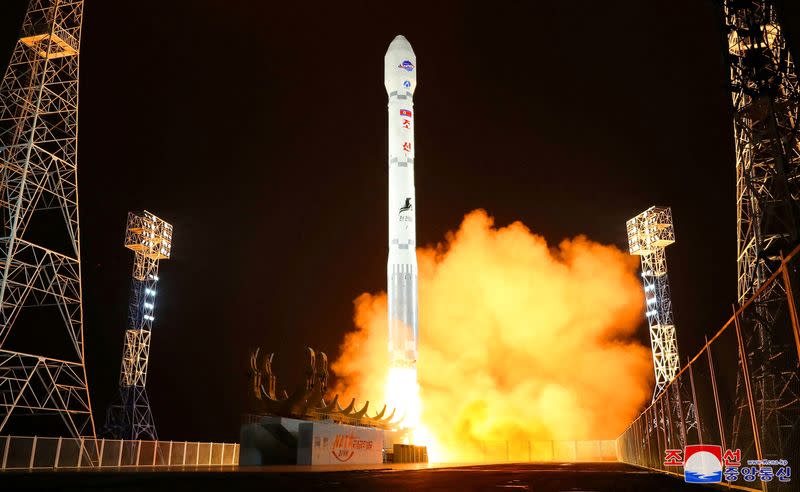North Korea's first spy satellite is 'alive', can manoeuvre, expert says
By Josh Smith
SEOUL (Reuters) -North Korea's first spy satellite is "alive", space experts said on Tuesday, after detecting changes in its orbit that suggested Pyongyang was successfully controlling the spacecraft - although its capabilities remain unknown.
After two fiery failures, North Korea successfully launched the Malligyong-1 satellite into orbit in November. Pyongyang's state media claimed it has photographed sensitive military and political sites in South Korea, the United States and elsewhere, but has not released any imagery. Independent radio trackers have not detected signals from the satellite.
"But now we can definitely say the satellite is alive," Marco Langbroek, a satellite expert at Delft University of Technology in the Netherlands, wrote in a blog post.
From Feb. 19-24, the satellite conducted manoeuvres to raise its perigee, or the lowest point in its orbit, to 497 km from 488 km (308.8 miles from 303.2 miles), Langbroek said, citing data from the U.S.–led Combined Space Operations Center.
"The manoeuvre proves that Malligyong-1 is not dead, and that North-Korea has control over the satellite - something that was disputed," he said.
South Korea's Defence Ministry said it too had assessed that the satellite was in orbit, but said it would not comment further on individual analyses. On Monday, Defence Minister Shin Won-sik said the satellite was not showing any signs of performing other tasks or engaging in reconnaissance.
"While we indeed currently cannot be sure whether the satellite does successfully take imagery, it at least performs orbital manoeuvres, so in that sense it is functional," Langbroek wrote of Shin's comments.
The orbit-raising manoeuvre was a surprise as the presence of an onboard propulsion system was unexpected and previous North Korean satellites never manoeuvred, he said.
"Having the capacity to raise the satellite's orbit is a big deal," Langbroek said.
That meant that as long as there was fuel in the satellite, North Korea could prolong the satellite's lifetime by raising its altitude when it got too low because of orbital decay, he concluded.
Harvard astronomer and orbital tracker Jonathan McDowell said the satellite appeared to be correcting its position in space as it moved to where it was shortly after launch, instead of making a hostile move toward another country's satellite - a capability for which he said the satellite was "much too small."
The United States, Russia and China, the world's top space powers, have in recent years launched satellites increasingly capable of manoeuvring and inspecting other orbital objects as space grows as a critical arena for communications, commerce and military activity.
But companies and countries often manoeuvre their satellites to improve the object's position in orbit. A variety of other reasons to manoeuvre include dodging other satellites or a piece of space debris or – depending on the satellites' capability – wading above a region of interest on Earth.
U.S. Space Command, which tracks all active objects in orbit and sometimes assesses their function, did not immediately comment on the North Korean satellite.
Nuclear-armed North Korea has vowed to launch three more spy satellites in 2024.
(Reporting by Josh Smith; additional reporting by Joey Roulette in Washington, Editing by Gerry Doyle, Alex Richardson and Sandra Maler)


